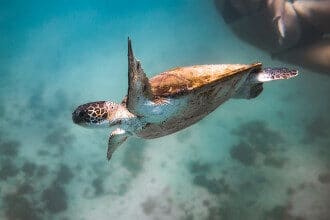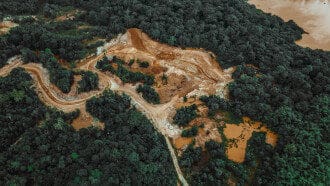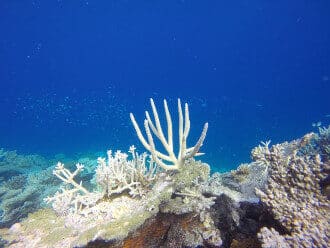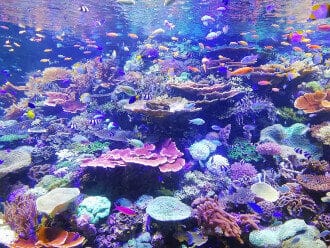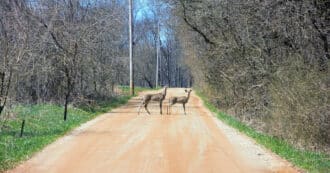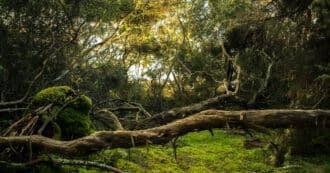By Ilana Stein – While the term is in fact a shortening of “biological diversity“, biodiversity is defined as “The variety of plant and animal life in the world or in a particular habitat, a high level of which is usually considered to be important and desirable.” But such a definition does not convey the sheer abundance and amazing variety of animal and bird species, plants and more that inhabit Earth’s ecosystems and different habitats.
What is Biodiversity?
Charles Darwin put it more poetically, when he said in On The Origin of Species, 1859, ch. 14,”There is grandeur in this view of life, with its several powers, having been originally breathed into a few forms or into one; and that, whilst this planet has gone cycling on according to the fixed law of gravity, from so simple a beginning endless forms most beautiful and most wonderful have been, and are being, evolved.”
Scientists estimate that there are about 8.7 million species on the planet – but they have only confirmed 1.2 million. That means that there are many tens of thousands of species still to be discovered. Some plants or animals are too small to be seen with the naked eye while others live in places that humans can’t access – like the very bottom of the ocean – and others may be made up of only a single cell.
Biodiversity Loss
With so many species, one would think that one more or less would not be so problematic. But sadly, this is not so. The major threats to biodiversity can be summed up as the extinction of species – in other words, the disappearance from the planet of all individual members of a species.
First, it is important to understand that extinction is something that has happened naturally over the millions of years that life has existed on the planet. In a natural system, scientists speculate that species extinctions happen at the rate of one in four years. But while some species are lost, others become stronger and more numerous, and so the balance remains. Biodiversity loss also helps biodiversity gain – and this is part of the ecological balance of the Earth.
In the last 200 years however, human activities have caused this delicate balance to implode. In the 19th century, one species became extinct per year, but by 1975 the extinction rate hit 1,000 species per year – and today it is assumed to have reached 40,000 species a year! With such numbers, we many never know most of the species on the planet, as they will have disappeared before we even knew they were here.
The Sixth Extinction
While extinctions have occurred throughout the world’s history, there have been five mass extinction events. A mass extinction is defined as “a short period of geological time in which a high percentage of biodiversity, or distinct species—bacteria, fungi, plants, mammals, birds, reptiles, amphibians, fish, invertebrates—dies out.” The most famous one was the event, 65.5 million years ago, which wiped out the dinosaurs and other species.
While the five events were caused by natural events, we are living through one today that is caused by human activities. The extinction rates are so great, that this sixth mass extinction is also called “the Anthropocene extinction” – the word ‘anthropocene’ means the “significant human impact on Earth’s geology and ecosystems”.
Threats to Biodiversity
There are major threats to biodiversity across terrestrial habitats, in marine environments and freshwater habitats. The IUCN Red List monitors all species that we know of living on Earth, their numbers and status. It is “a critical indicator of the health of the world’s biodiversity” and it is easy to see that the numbers of threatened species are growing. The main threats to biodiversity are many.
Habitat Loss
Biodiversity loss today is primarily being caused by humanity. Population growth has increased exponentially over the past centuries, and the human population requires resources for food production. Through the increase in agricultural land and tropical deforestation for example, habitat loss has occurred to such an extent that many living creatures have lost their space on the planet. This habitat destruction is a core threat to biodiversity; after all when an entire habitat is destroyed, all those who have lived there have nowhere to go and so die out.
Sometimes it is not an entire habitat that has been destroyed but instead human population growth has exploded so that habitat fragmentation has occurred, where small pieces of forest or grassland exist on their own resulting in animal or plant populations being squeezed into smaller, disconnected areas. This habitat fragmentation causes individuals to be cut off from the rest of their species, which means less natural growth of the species. In addition, when a species begins to decline, it becomes less resilient and is at further extinction risk. These factors ultimately combine to create irrevocable loss and extinction. Just look at the battle to save the colobus monkeys in Diani, Kenya.
Invasive Species
Humans have spread out over the earth’s surface, and wherever they have gone, they have taken some of their native species with them. These invasive species – for example, pigeons, starlings and rats but also exotic species – settle in their new home forcing the native species out.
This is particularly dire in fish species both in freshwater and the marine environment where invasive species have virtually destroyed all native species in certain rivers in Europe and North America.
Climate Change
A major threat to biodiversity loss is that of climate change, caused by human activities. As a result of fossil fuel combustion, more carbon dioxide is released into the atmosphere, which in turn causes an increase in greenhouse gases, sharply fluctuating temperatures and weather events such as storms or droughts becoming more severe. Many species are unable to adapt to such rapidly-changing conditions and their populations can dwindle and crash. Coral reefs are in particular danger due to global warming from climate change, with coral bleaching taking place; the death of these marine species means a huge extinction risk as coral reefs are home to a quarter of all marine life.
Another example of climate change induced biodiversity loss is the warming of the Arctic. Snow and sea ice melting at a rapid rate is a huge threat to many species, including the iconic polar bear, which has shown sharp population declines over the past 50 years and has become known as one of the flagship species showing the risk of animal extinctions. A further result of climate change is also the threat of sea level rise, flooding low-lying or coastal areas, once again causing habitat loss and adding to the biodiversity threats and rising extinction rates.
Pollution
As a result of the increase in human population growth and its striving for constant economic development, there has been a surge in pollution of all kinds. Aside from being a factor in climate change, pollution of soil, air and water makes it very difficult for animals and plants to live in their natural habitats, creating further threats to biodiversity.
For example, particles of plastic end up in the water, clogging the gills and lungs of the fish species, mammals and others who live in the oceans. Nutrients from nitrogen compounds and fertilizers end up in rivers and the sea, often contributing to an overgrowth of toxic algae, known as algal blooms. Aside from being harmful to humans, algal blooms deplete the oxygen in the water causing the deaths of many fish species and therefore biodiversity loss.
In addition to causing climate change, burning fossil fuels and other fumes spew particles into the air, causing air pollution. These particles often mix with water droplets in clouds, ultimately falling to earth as acid rain and coating trees and plants in soot. This prevents the plants from taking in carbon dioxide and releasing oxygen – effectively stopping them from breathing.
Overexploitation
While we all need to eat and food production is important, we tend to overuse our land and sea use, removing more species from the ecosystems. We log tens of thousands of acres of land causing tropical deforestation. Farming takes up more agricultural land and strips the soil of its nutrition so that soil fertility drops and less crops can be grown.
Meanwhile, overfishing has drained our freshwater resources as well as the marine environment – “70% of fish stocks in the ocean are currently being overfished”. Global trade in animals and plants is a major threat to biodiversity by removing species from natural ecosystems: “Global trade includes at least 40,000 primates, ivory from at least 90,000 African elephants, 1 million orchids, 4 million live birds, 10 million reptile skins, 15 million furs and over 350 million tropical fish.”
Biodiversity Supports Our Health
Biological diversity is not just beautiful, it is vital for the health of the Earth, and our existence. The life-supporting processes of these ecosystem services depend on the interplay between the many species, and the natural systems and cycles that they live in, such as water cycles, pollination of plants and soil fertility. Threats to biodiversity decrease the resilience of these systems. Ultimately, if we do not look after global biodiversity, human welfare and human health is at stake.
Is There Hope?
Can we hold back the sixth mass extinction? It depends on how we protect biodiversity, and how sustainably we deal with land and sea use as sustainable development. Do we need to protect a habitat in its entirety or is it better to protect individual species, one species at a time? Will climate change cause another mass extinction? How do we deal with all these varied threats to biodiversity? These are questions that those dealing with environmental sustainability must consider, as by protecting wildlife, we can protect global biodiversity.
There is hope as people are beginning to understand that when biodiversity is safe, humanity thrives: Increasingly, “businesses, individuals, and organizations are finding innovative, collaborative ways to protect the planet.”
Biodiversity and the Bible
In Genesis, the Bible describes the creation of a world that is filled with biodiversity. Many commentators question why we need this account at all. Rabbi Samson Raphael Hirsch (Nineteen Letters, Letter Three) explains:
It was not just with one word, one summons of creation, that the Almighty brought this world into being, the whole of it and every detail; for if it had been created in this manner, everything would have been directly dependent upon God’s word for its existence, life and functioning. Instead, He called forth His world into existence in ten stages; He created an abundance of forces, intermingled and functioning closely together, according to His Word – and then He separated them, so that each had to sustain the other; none was henceforth able to exist and function by itself but had to be sustained by its fellow creatures and, in turn, had to help them exist and function.
In this way, everything contributes according to its strength, however much or little, to the existence of the whole, and if it destroys a fellow creature, it robs itself of what it needs for its own existence.
* Featured image source


